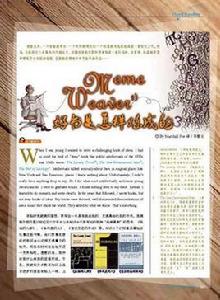正式文體中
一、由下列詞語連線的並列主語:"there be+句型; or ; either …or;nor; neither…nor;whether…or;not…but; not only…but also" ;等。
例句:
1.What he does or what he says does not concern me.
他的行為或言談都與我無關。
2.Neither you nor I am wrong .
你和我都沒錯。
3.Not you but your father is to blame.
不是你,而是你的父親該受責備。
4.Not only you but(also) he is wrong.
不僅你錯了,他也錯了。
二、在倒裝句中:謂語可與後面第一個主語一致。
例句:
1. In the distance was heard the clapping of hands and the shouts of the people .
在遠處,能聽見鼓掌聲和人們的呼喊聲。
2.There is a pen and some books on the desk.
桌上有一支鋼筆和幾本書。
3.There are some books and a pen on the desk.
桌子上有幾本書和一支鋼筆。
非正式文體中
有時依“就近一致原則”,但也可依“意義一致原則”或嚴格地依“語法一致原則”。
例句:
Neither she nor I were there. (意義一致) 我和她當時都不在那兒。(非正式)
Neither she nor I was there .(就近一致)(譯文同上句)(正式)
但是,如果依“就近一致原則”而與其他兩項原則相矛盾時,則常常認為是不太合符規範的。
No one except his own supporters agrees with him .
僅他自己的支持者同意他的意見。(依“就近”和“意義”一致的原則;但語法上,“No one ”才是主語,謂語要改成“agrees”。“寫作中”一般要依“語法一致”原則。)

